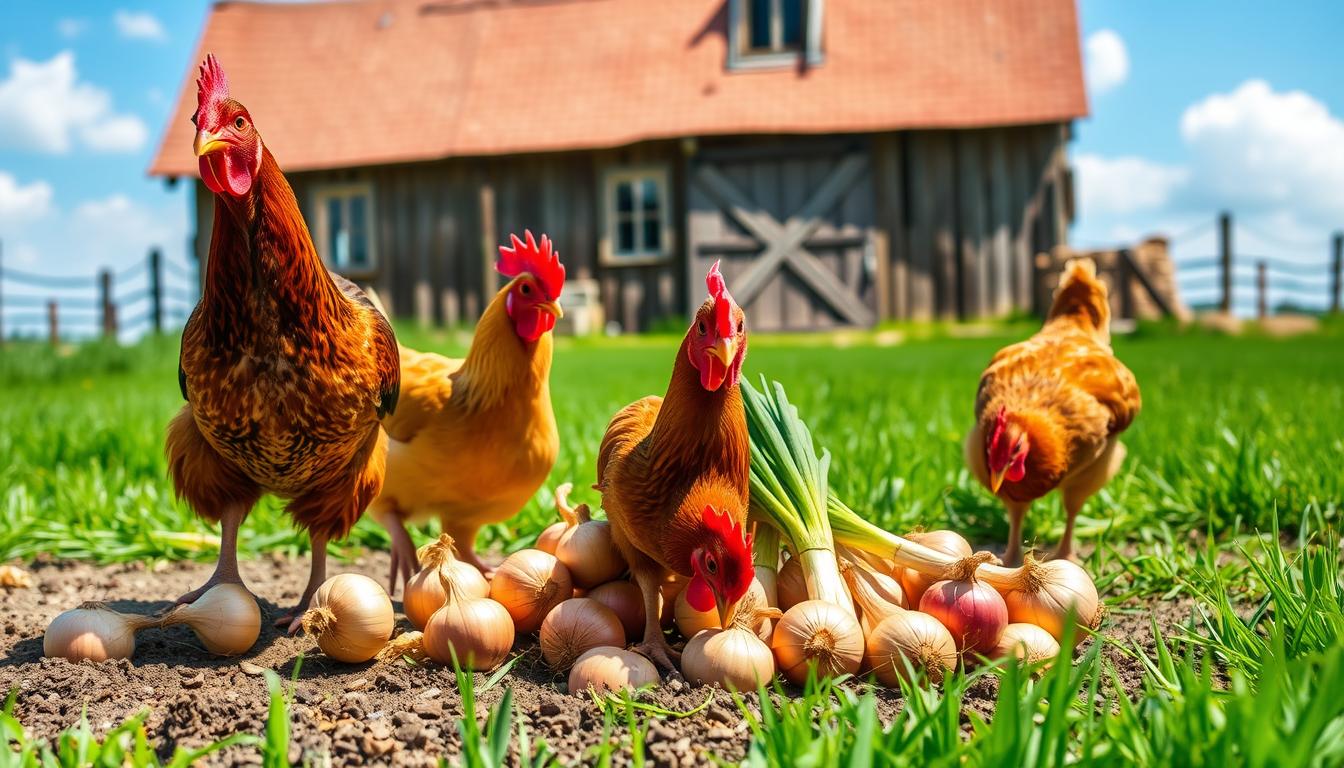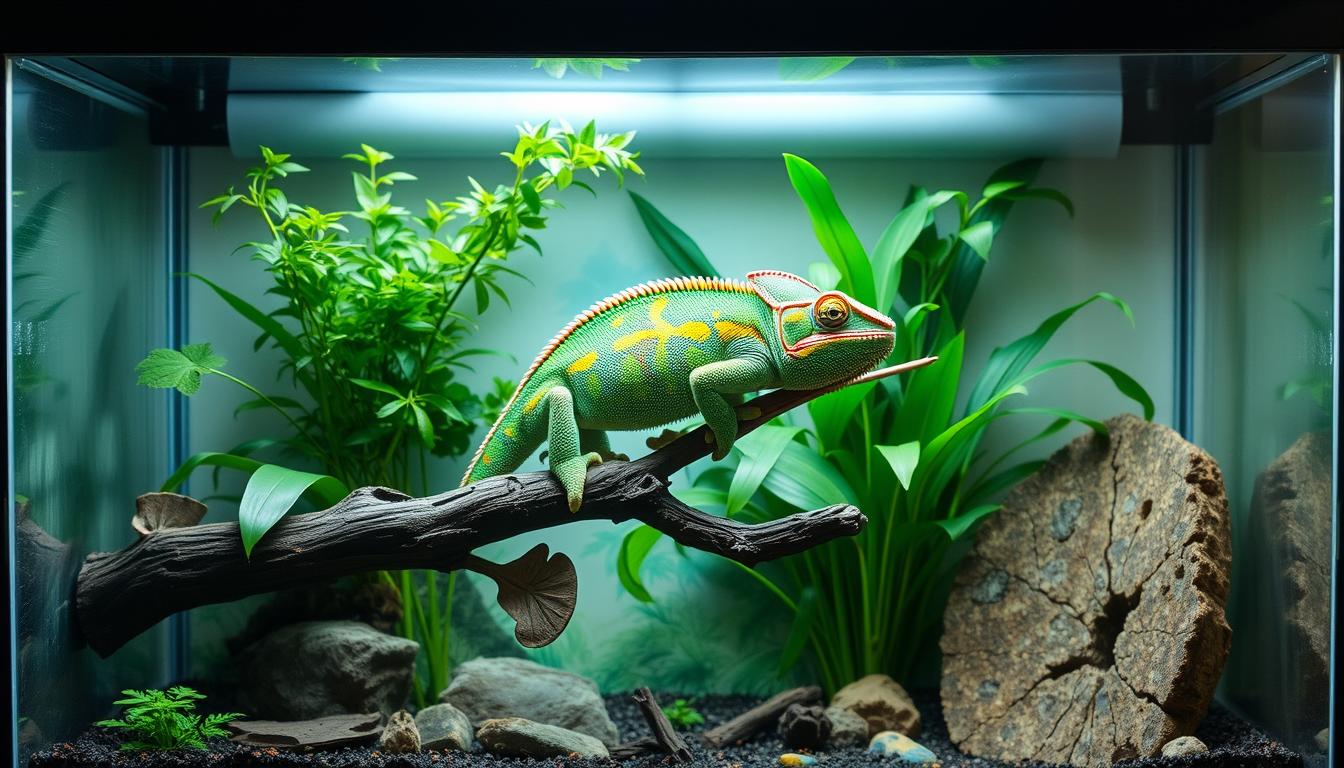Black Deer: Find Facts About These Unique Creatures
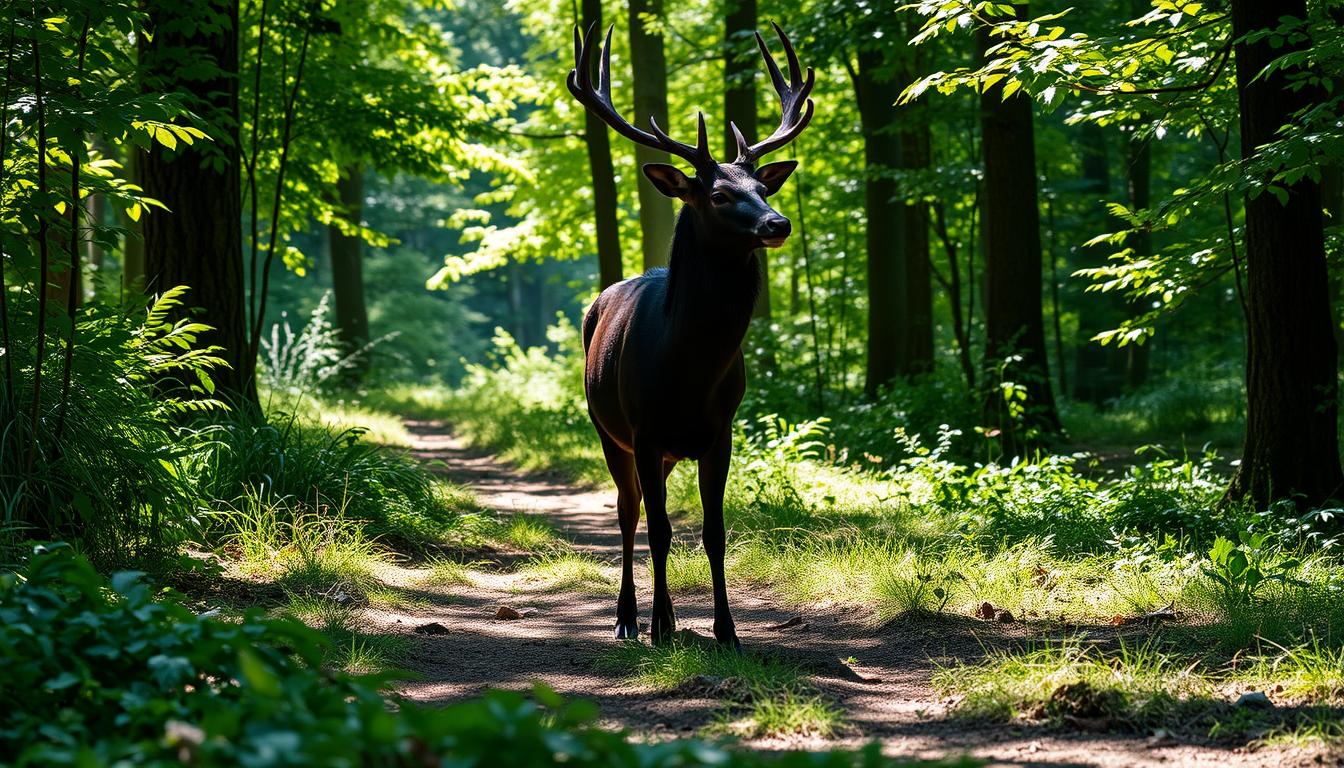
Did you know that melanistic white-tailed deer are so rare? They’re like celebrities at a local grocery store. The black deer phenomenon is a fascinating twist in a common species. Many wildlife fans are drawn to this unique color variation.
Exploring black deer reveals their interesting genetics and habitat choices. These factors are key to their survival and the health of their ecosystems. By learning about these special animals, we can better appreciate the variety of wildlife around us. This includes the rare melanistic forms that catch our eye here1.
Key Takeaways
- Black deer are a rare variant of the common white-tailed deer.
- Melanism in deer is a genetic anomaly, leading to unique coloration.
- These animals play a significant role in maintaining ecological balance.
- Understanding their habitat and behavior is crucial for wildlife conservation.
- Black deer sightings can illuminate discussions about biodiversity.
What Are Black Deer?
Black deer, also known as melanistic deer, are a rare type of whitetail deer. They have a dark color due to a genetic mutation. This mutation causes them to have a dark chocolate brown or black coat. They make up less than 1% of deer, making them very rare2.
In central Texas, especially in the Edwards Plateau and Hill Country, black deer are often seen. Some Texas counties like Blanco, Burnet, and Caldwell have the most sightings. Their unique look is a big draw for hunters and nature lovers2.
The first record of black deer was in 1929. They have always been a mystery. Scientists think their dark color might help them survive in darker places3. But, they are safe to eat, just like regular deer4.
Understanding Melanism in Black Deer
Melanism is a genetic phenomenon that affects deer, including black deer. It comes from a mutation in the MC1R gene. This mutation leads to more dark pigments, causing the unique melanistic traits seen in these animals.
Black deer have fur that is uniformly dark. This makes them stand out from the more common brown or white-tinged deer5.
Genetic Anomaly of Melanism
Melanism is a rare genetic anomaly. It affects only one in 500,000 deer. This rarity is seen in the United States, especially in Texas’s Edwards Plateau area.
This area has the highest number of these unique animals. Despite their rarity, many wildlife enthusiasts and hunters are interested in them6.
How Melanism Differentiates Black Deer
Melanistic deer can be mistaken for albino or piebald deer. But they don’t have the contrasting patterns these traits have. Most black deer have a deep black fur coat.
Some may have dark brown or dark gray fur with subtle white markings. The fawns of melanistic deer have smaller and less visible white spots than normal fawns. This shows how melanistic deer are special in the deer population7.
Distribution of Black Deer Populations
Black deer are found in many places across the United States. They live in areas like Texas, Mississippi, and Pennsylvania. These places have different climates and habitats that suit these unique animals.
Where Black Deer Are Found
In some areas, black deer are more common than others. The Edwards Plateau in Texas has the most black deer. This region has dense plants and rivers, making it perfect for these deer to hide.
Regions with Notable Concentrations
Black deer are found in certain areas in high numbers. These places have the right conditions for them to live well. They like areas with lots of plants, which helps them find food.
In Texas, up to 8.5% of deer are black. This shows how important these areas are for their survival8.
| Region | Black Deer Population Estimate | Notable Characteristics |
|---|---|---|
| Texas (Edwards Plateau) | Significant concentration, approx. 8.5% melanistic | Dense vegetation, river drainages |
| Mississippi | Moderate population | Diverse habitats |
| Pennsylvania | Emerging populations | Adaptable environments |
The Significance of Black Deer in the Ecosystem
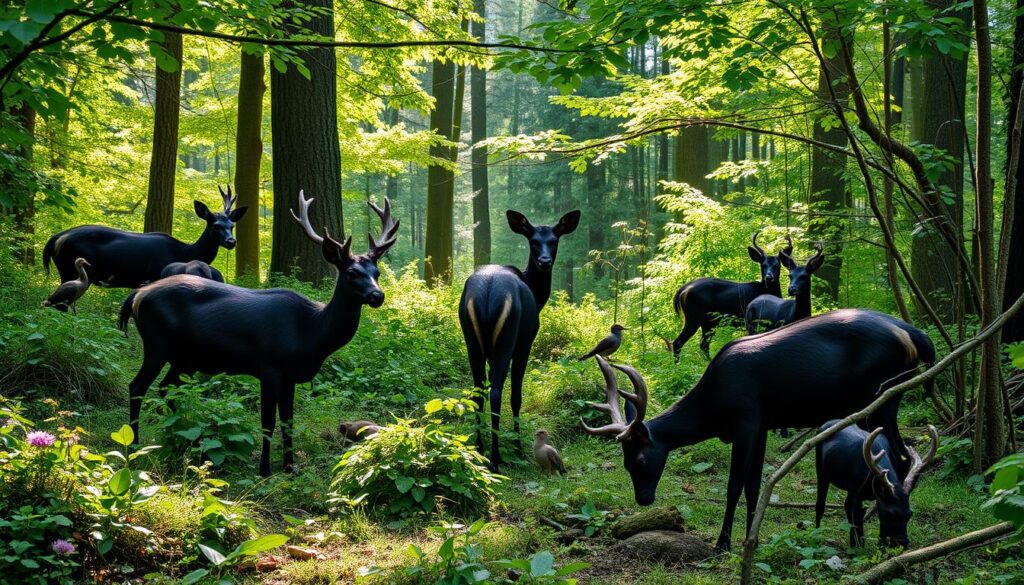
Black deer are key players in the ecosystem. They keep vegetation in balance by eating plants. This affects plant diversity and growth in their homes.
Deer populations worldwide have grown a lot in recent years. Black deer have a big impact on local ecosystems9. They change plant communities and create paths, affecting forest ecosystems9.
In North America, deer are found in large numbers. They live in many different places9.
Black deer also affect plant life and the balance between predators and prey. They help keep predator populations healthy. In Virginia, deer numbers went from 25,000 in 1931 to 900,000 by the early 1990s9.
This shows how deer can change their environment. It highlights their importance in keeping ecosystems healthy.
Physical Characteristics of Black Deer
The black deer has striking features that set it apart from other deer. These include black deer size, coloration, and deer anatomy. These traits give us a better understanding of this unique mammal.
Coloration and Size Comparisons
The black deer size is similar to white-tailed deer, weighing 125 to 300 lbs. They stand about 3.3 feet tall at the shoulder10. Their dark color helps them blend in, especially in forests, making it easier to hide from predators.
Body Structure and Features
Black deer have long legs, strong bodies, and big ears. These features help them survive. Their dark color helps them hide and find food in certain habitats. They mainly eat plants like leaves and buds, showing their need to forage in their natural settings Learn more about their anatomy and.
Behavior and Habitats of Black Deer
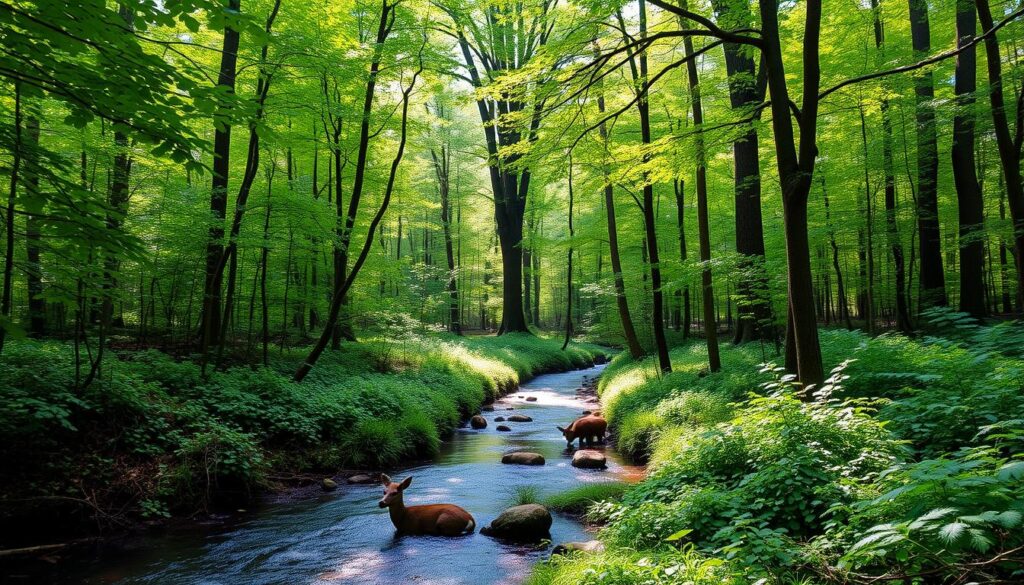
Black deer have a special bond with their environment. They live in certain habitats that offer them shelter and food. These places help them feel comfortable and interact with each other.
Preferred Habitats and Ranges
Black deer love forests with thick underbrush for hiding from predators. They also enjoy open meadows for grazing. Having water nearby is key for their hydration.
Black-tailed deer live along the Pacific coast, in places like California, Oregon, and Washington. They adapt well to different habitats, showing their flexibility. Their homes mix woods and open areas, meeting their needs and shaping their social groups.
Social Structures within Black Deer Groups
Black deer form groups, but they’re not always tight-knit. Does and their fawns stick together, while bucks often wander alone during mating season. This pattern is common among deer, showing how important social life is for them.
When black deer gather, their social structure helps protect young fawns. Their ability to adapt to their environment is seen in how they interact and find food and safety in their habitats.
Diet and Feeding Habits of Black Deer
The diet of black deer is fascinating. They mainly eat plants, changing what they eat with the seasons. Knowing what they like helps us understand where they live best.
Types of Food Consumed
Black deer love to eat plants. In cold and early spring, they munch on red huckleberry, salal, and lichens. As summer turns to fall, they eat grasses, shrubs, and berries. This shows how they adjust their eating habits all year11.
On average, male black-tailed deer weigh 140 to 200 pounds. Female deer weigh 90 to 130 pounds12.
Foraging Behavior
Black deer forage at dawn and dusk, when it’s safer. They change how they eat based on the weather. They usually stay in a small area, up to 3 square miles, to find food12.
Fawns often face high death rates, up to 70%. This shows how crucial food is for their survival11.
Threats to Black Deer Populations
Black deer face many threats, including coyotes, bears, and mountain lions. These predators can change how many deer there are. But, humans also play a big role in making things worse for them.
Natural Predators and Their Impact
Predators help keep deer numbers in check. But, how much they affect deer depends on where they live. When there are more predators, deer numbers often go down. This changes the balance of nature.
But, human actions make things even harder for deer. This balance is disrupted by what humans do.
Human Influences: Hunting and Habitat Loss
Humans hurt deer by destroying their homes and hunting them. Cities growing means less space for deer. Hunting rules can’t keep up with how many people want to hunt.
Studies show we need to save their homes and manage deer numbers. This helps them survive in a world full of challenges. For more on how to protect deer and their homes, check out this link13.
FAQ
What makes black deer different from regular white-tailed deer?
Where can I find black deer in the wild?
What do black deer eat?
Are there any threats to black deer populations?
How does the melanism trait affect black deer survival?
Do black deer have different social structures compared to other deer?
What is the significance of black deer in their ecosystems?
How do the physical characteristics of black deer compare to regular white-tailed deer?
Source Links
- https://en.wikipedia.org/wiki/Black-tailed_deer – Black-tailed deer
- https://huntwise.com/field-guide/deer/how-rare-are-black-deer – How Rare Are Black Deer?
- https://deerassociation.com/melanistic-whitetails-heres-know/ – Melanistic Whitetails: How Rare Are Black Deer? | National Deer Association
- https://realtree.com/brow-tines-and-backstrap/have-you-ever-seen-a-melanistic-whitetail?srsltid=AfmBOorYIKjV216vwSolchbPCy-lutyDyeJPBvqoGSPXeDBxqxDxIP6P – Have You Ever Seen a Melanistic Whitetail?
- https://realtree.com/brow-tines-and-backstrap/have-you-ever-seen-a-melanistic-whitetail?srsltid=AfmBOooPY-UcAwdEYVmBkYFcoN0Qa1UD41CHqO6zzdNl8He7wZsY9dlO – Have You Ever Seen a Melanistic Whitetail?
- https://thetravelingoutdoorsman.com/melanistic-whitetail-deer/ – Unveiling the Mysteries of Black Deer
- https://www.missouriwhitetails.com/threads/melanism-a-deer-of-a-different-color.245526/ – Melanism: A Deer of a Different Color
- https://www.adfg.alaska.gov/index.cfm?adfg=deer.printerfriendly – Sitka Black-tailed Deer Species Profile, Alaska Department of Fish and Game
- https://bloomington.in.gov/sites/default/files/2017-08/Ecological Impacts of Deer Overabundance.pdf – AR229-ES35-05.TEX
- https://muledeer.org/mule-deer-black-tailed-facts-biology/?srsltid=AfmBOoohsDwyPQW9sRFBjnqeRZsS3LMjmnuLORS3GFQSR1WirTNHXK4x – Mule Deer Facts
- https://northwestwildlife.com/wp-content/uploads/2018/10/black-tailed-deer.pdf – PDF
- https://wdfw.wa.gov/sites/default/files/2020-09/living_with_deer.pdf – treesquirrels
- https://www.audubon.org/magazine/surging-deer-populations-are-crisis-eastern-forests – Surging Deer Populations Are a Crisis for Eastern Forests

